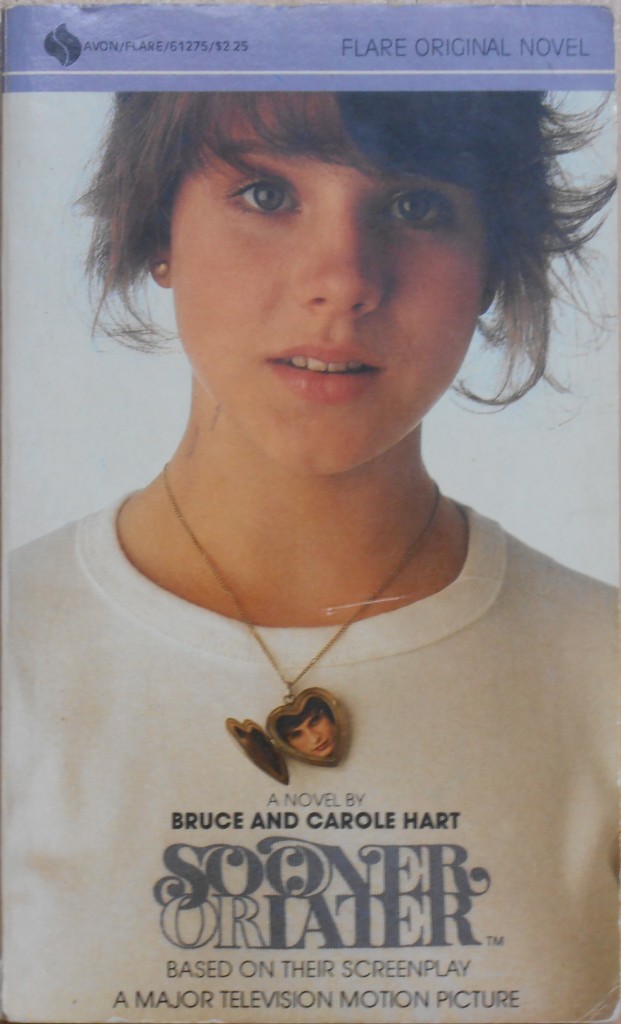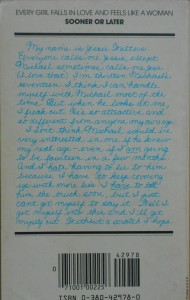“Put a finish on it, Jess.” Michael Skye says these words to Jessie Walters in Bruce and Carole Hart’s young adult novel, Sooner or Later. Published in 1978, Sooner or Later came to me via secondhand bookstore in 1993, when I was twelve. It’s a slim volume, based on their screenplay of the same name. At twelve, I had never read anything like it, and I can still remember how I felt having just finished it, that bubbly, happy, romantic, satisfied feeling I feel at the end of a fantastic read. I felt it again, just now, as I flipped through its pages.
The story is simply this: Jessie Walters is thirteen and falls in love with the seventeen-year-old, guitar-playing lead in the Skye Band. She had just gotten made over in the mall and looks sixteen when she first sees him play. The Harts capture that on-the-brink-of- everything feeling, of life, of love, of being grown up. They write in present tense, giving the reader that sense of immediacy, of being in the moment with Jessie. Sooner or Later is the first novel I read that isn’t written entirely in complete sentences. A good portion is fragments down the page—delightful, funny, oh-so-real fragments. Jessie describes her class as they watch a sex education reel that is literally about birds and bees:
“All of us are here for the same reason. We are here to learn about sex.
We couldn’t have picked a better time.
Or a worse place.
Because the room is a classroom.
An eighth-grade classroom.
In John F. Kennedy Junior High School.
In Englewood.
New Jersey.
U.S.A.
Where sex education is a joke.”
In another scene, when she’s in a guitar lesson with Michael, she narrates, “And he’s standing right in front of me. Thisclose!”
It’s the “Thisclose!” that really got me. I’d never seen language and structure played with that way, and I loved it. I love it still. In college, when I had to give a presentation about a piece of writing that meant something to me, I chose this novel.
In the beginning of Sooner or Later, Michael tells Jessie to “put a finish on it,” to let her know that she should play the closing chords she’s learned. By the end of the novel, the phrase takes on another meaning.
I chose “Put a Finish on It” for two reasons. The first is my decades-long appreciation for this novel and the Harts’ still fresh and funny writing style. The second is the two-fold meaning of “finish.”
finish 1 v.: to come to an end 2 n.: something that completes or perfects

